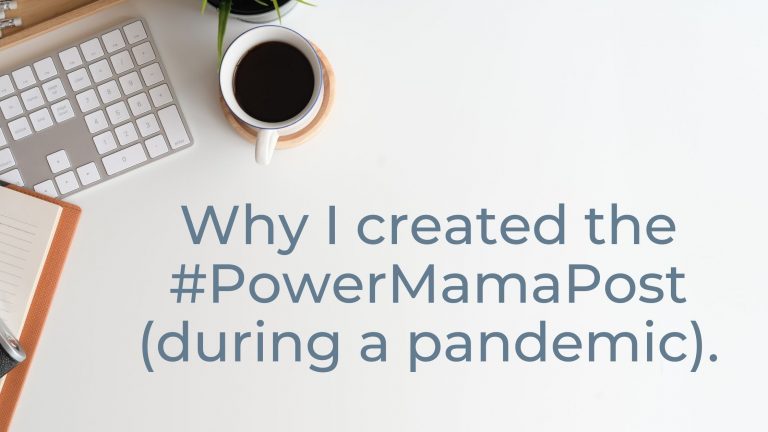Why you’re failing at self-care (and what you can do about it).
Part 2 of our self-care series. Read part 1 here.
Sound familiar?
You know you need to ‘take better care of yourself’, so why is it always such a struggle to make it happen?
Too many of moms are failing at self-care because of a basic misunderstanding of what self-care actually is, and how to do it.
What is real self-care? It’s the process of tuning into our own needs and taking responsibility for making them a priority.
Why is this so challenging to do? So many women have spent our lifetimes learning how to tune into and prioritize other people’s needs, while we minimize or hide our own needs at the same time.And then when motherhood hits you, it becomes harder to tune into yourself, and it’s harder to find time to care for yourself. Pretty soon, that becomes a way of life.
The missing ingredient in your self-care strategy? EQ.
Your best efforts at self-care will always fall short if you haven’t first learned how to tune into and prioritize our own needs. To do this you need to practice a few key emotional intelligence skills, including:
- Self-awareness: how to notice and name your feelings, and use them as a guide to understanding when your needs are not being met
- Self-management: understanding the wide range of needs you have and making sure you’re meeting those needs
Sounds simple enough, right? And it is – but it can take a bit of practice. Building these skills is part of the process of improving your EQ – emotional intelligence – your ability to “to understand, use, and manage your own emotions in positive ways to relieve stress, communicate effectively, empathize with others, overcome challenges and defuse conflict.”
Feelings first
You experience needs through feelings, so if you want to be able to tune into your needs, you have to start by being able to recognize and name your emotions. Here’s a printable list of emotions from the Centre for Nonviolent Communication that you can use as a cheat sheet.
How you feel when your needs are being met:
- Affectionate
- Engaged
- Hopeful
- Confident
- Excited
- Grateful
- Inspired
- Joyful
- Exhilarated
- Peaceful
- Refreshed
How you feel when your needs are NOT being met:
- Afraid
- Annoyed
- Angry
- Aversion
- Confused
- Disconnected
- Uncomfortable
- Self-conscious
- Burnt out
- Sad
- Tense
- Vulnerable
- Jealous
Once you’ve figured out what emotions you’re feeling, you can pretty easily decide if your needs are getting met or not. This is really important to practice throughout the day; your feelings become the barometer of your self-care, they let you know when you need to put one of your self-care strategies into action. But before you do that, you need to make the leap from feelings to needs.
Naming your needs
There are a few different ways to think about your different needs. I’m sure you’ve heard of Maslow’s hierarchy, which is probably the best known way of conceptualizing human needs. No offense to Maslow, but I’m not a fan of these kinds of triangular or ladder shaped models, because it tends to make us think that we MUST always prioritize physical needs ahead of emotional or social needs.
Instead, I think it’s helpful to have a sense of the whole range of our needs so we can have a better sense of what’s missing in our day to day.
Back to the Centre for Nonviolent Communication, which has another useful inventory listing a range of needs. They sort needs into the following categories:
- Connection
- Physical wellbeing
- Honesty
- Play
- Peace
- Autonomy
- Meaning
And again, here’s a printable list of this inventory with more detail.
So before you can start to make a self-care plan that really works for you, you have to practice the emotional intelligence skills of naming your feelings and connecting them to your needs (both the ones that are being met and the ones that aren’t).
These two simple EQ exercises will kickstart your selfcare
For the next three days, set a timer on your phone twice a day to remind yourself to do this simple EQ practice – it will only take you a minute. You can do it as a simple reflection exercise in your head, or jot it down in a notebook or journal as you go.
Tune into your feelings. How are you feeling right now? Take a look at the list of emotions and try to pick two or three that you’re experiencing right now. Notice if your feelings are coming from the ‘needs being met’ or ‘needs not being met’ list (and yes, it’s ok if you’re on both lists at the same time!).
Name your needs. Make sure you do this for both the needs that you’re meeting and the ones that aren’t being met! Try to figure out which needs you have right now (it can be ones you’re meeting, not meeting, or a mix of the two). Use the needs inventory to help. When you’ve identified one or two, think about how you may have ignored, minimized or de-prioritized that need today OR how you took responsibility for making that need a priority. Why do you think that happened?
That’s it – just focus on practicing the EQ part right now, don’t put pressure on yourself to ‘fix’ anything right now, and definitely don’t pile any guilt on top of your unmet needs!
Next week, in Part 3 of this self-care series, we’ll focus on making a self-care strategy.







